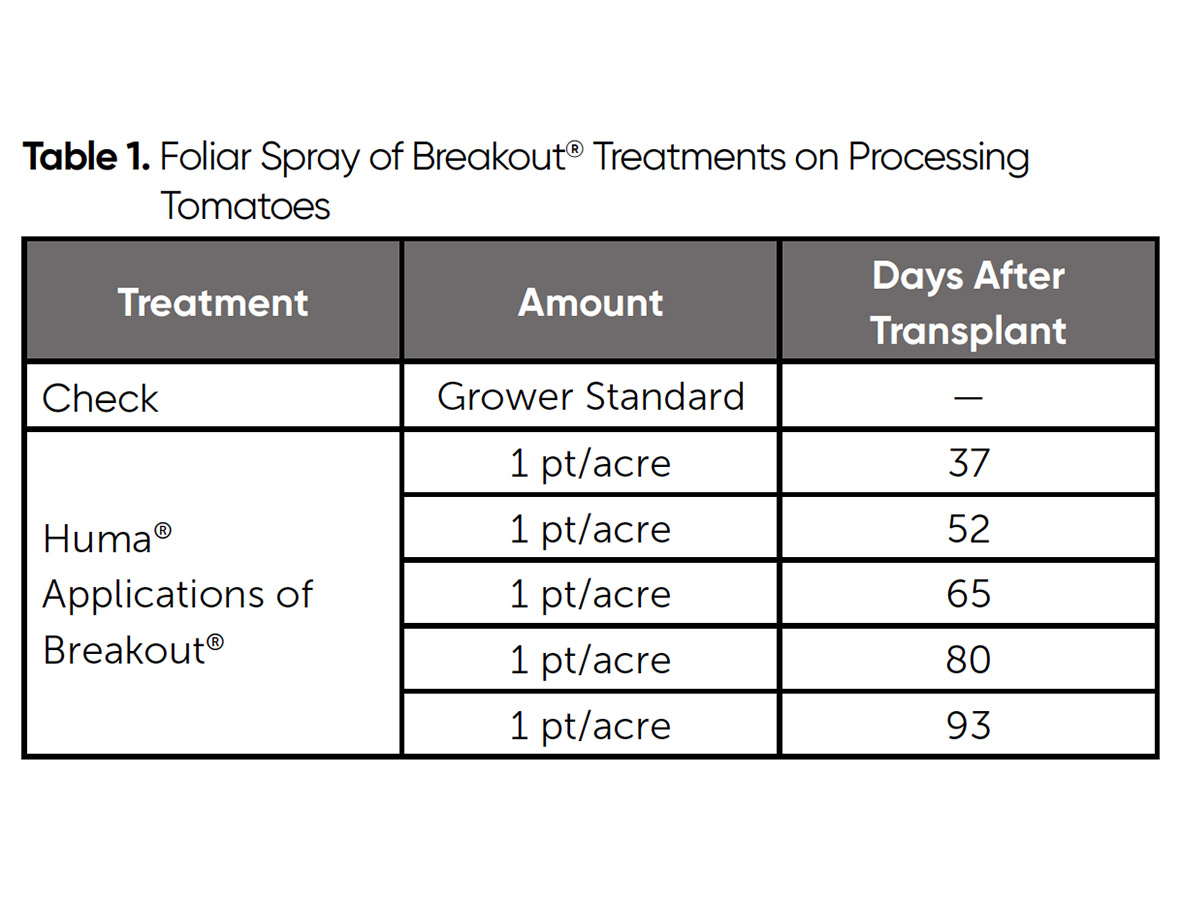Objective
In this study, the Huma® growth manager product Breakout® was evaluated in terms of its effects on yield and quality of processing tomatoes.
Materials & Methods
In cooperation with the University of California, processing tomato seedlings were transplanted on a farm in Central Valley of California near Patterson on April 4 and then harvested on August 26. The plots were arranged in a randomized complete block with four replications (Photo 1).

Photo 1. Processing Tomatoes Treatment Plot
While the control plants (Check) did not receive any stimulant treatments, other tomato plants (Huma®) received foliar applications of Breakout® sprays at one pt/acre each on five different dates (05/11, 05/26, 06/08, 06/23, and 07/06) (Table 1). The Breakout® applications started on bud initiation and lasted until about seven weeks prior to harvest. On about May 26, Curly Top Virus (also known as Beet Curly Top Virus—BCTV) appeared on some plants and increased with the passage of time. On July 6, the percentage of plant canopy coverage, and then at harvest the yield, Brix, grade qualities (red, pink, green, sunburn, mold, and blossom end rot) were assessed (Table 2, Table 3).
Results
Spraying leaves of tomato plants with Breakout® at 1 pt/acre resulted in a 4% increased yield (56 ton/ac) over the Check treatment regime (54 ton/ac) (Figure 1). This yield increase offset the cost of Breakout® application by a factor of 8:1, resulting in a net gain to the grower of $186.04 per acre.
Brix reading and percentage of red tomatoes, as well as the plant canopy coverage, were higher among the Breakout®- treated plants than the Check plants (Table 2, Table 3).

Table 1. Foliar Spray of Breakout® Treatments on Processing Tomatoes

Figure 1. Processing Tomatoes Yield Response of Breakout® Treatments

Table 2. Tomato Plant Canopy Coverage, Brix, and Disease

Table 3. Tomato Grade Quality, At Harvest
The Curly Top Virus and mold were more present among the Check plants than the Huma® plants.
Conclusions
The positive outcome of applying Breakout® to processing tomatoes included a 2-ton/acre yield increase, a higher percentage of high-grade tomatoes at harvest, an 8:1 ROI, and net return of $186.04 per acre. The addition of Breakout® is a profitable choice for growers.

